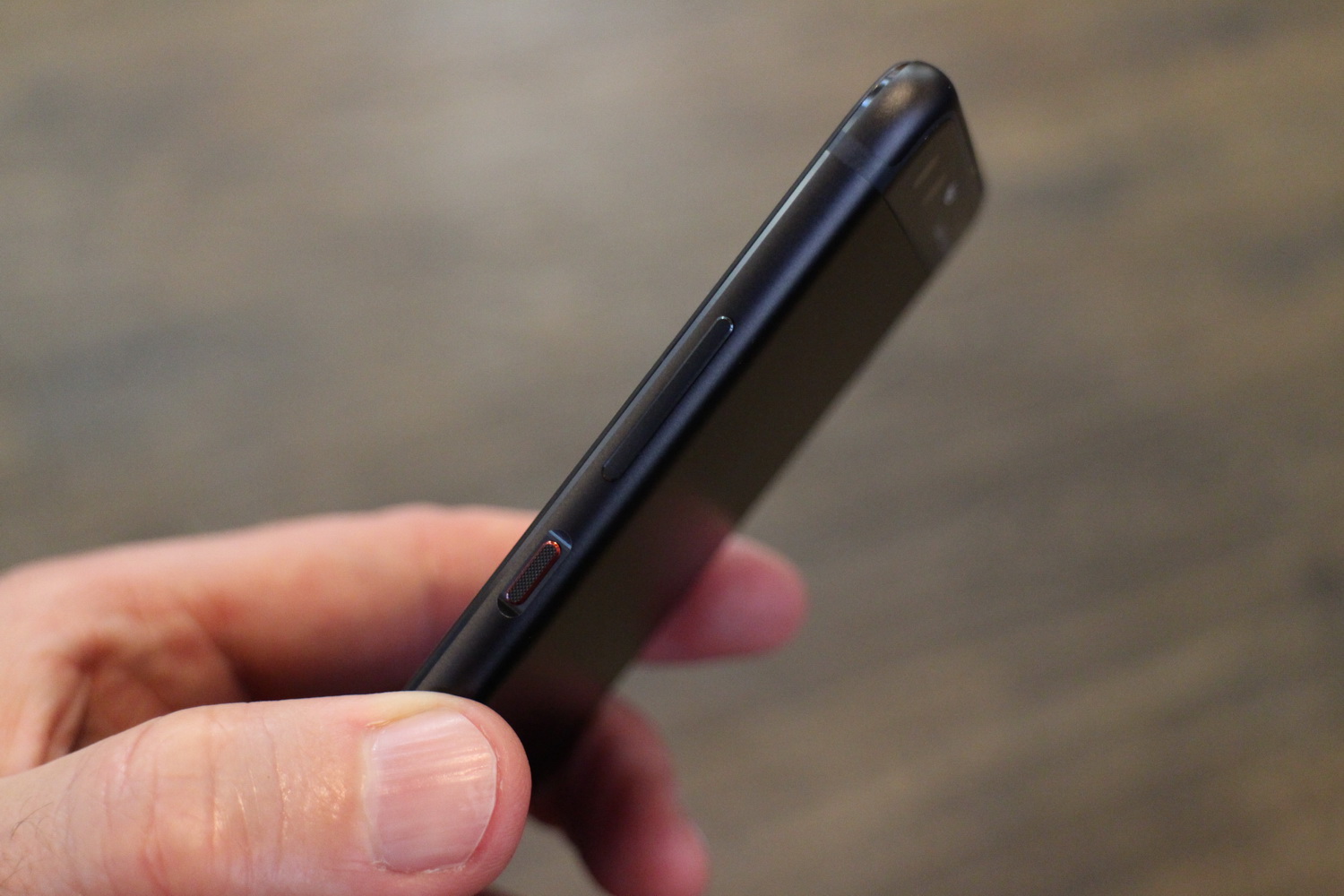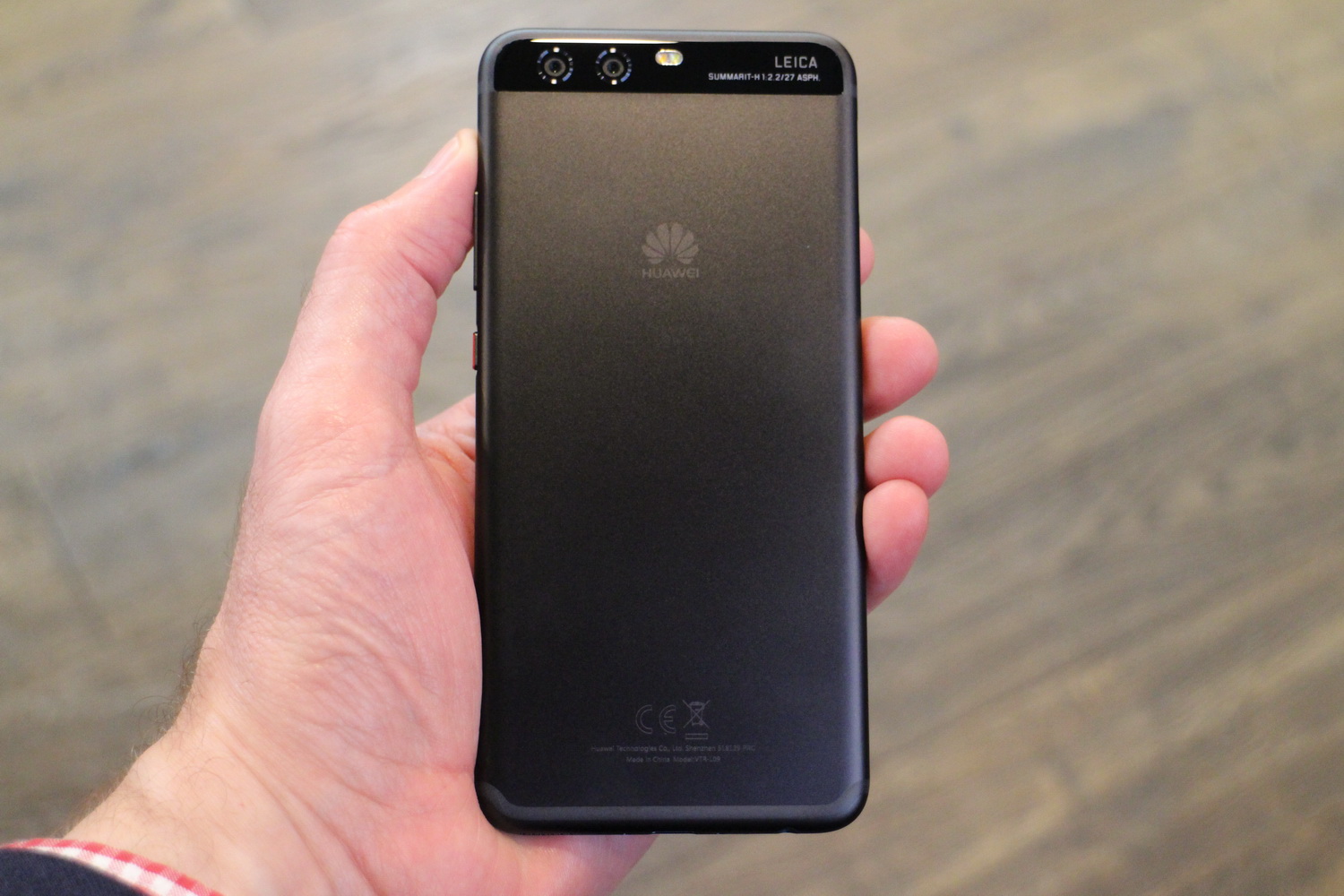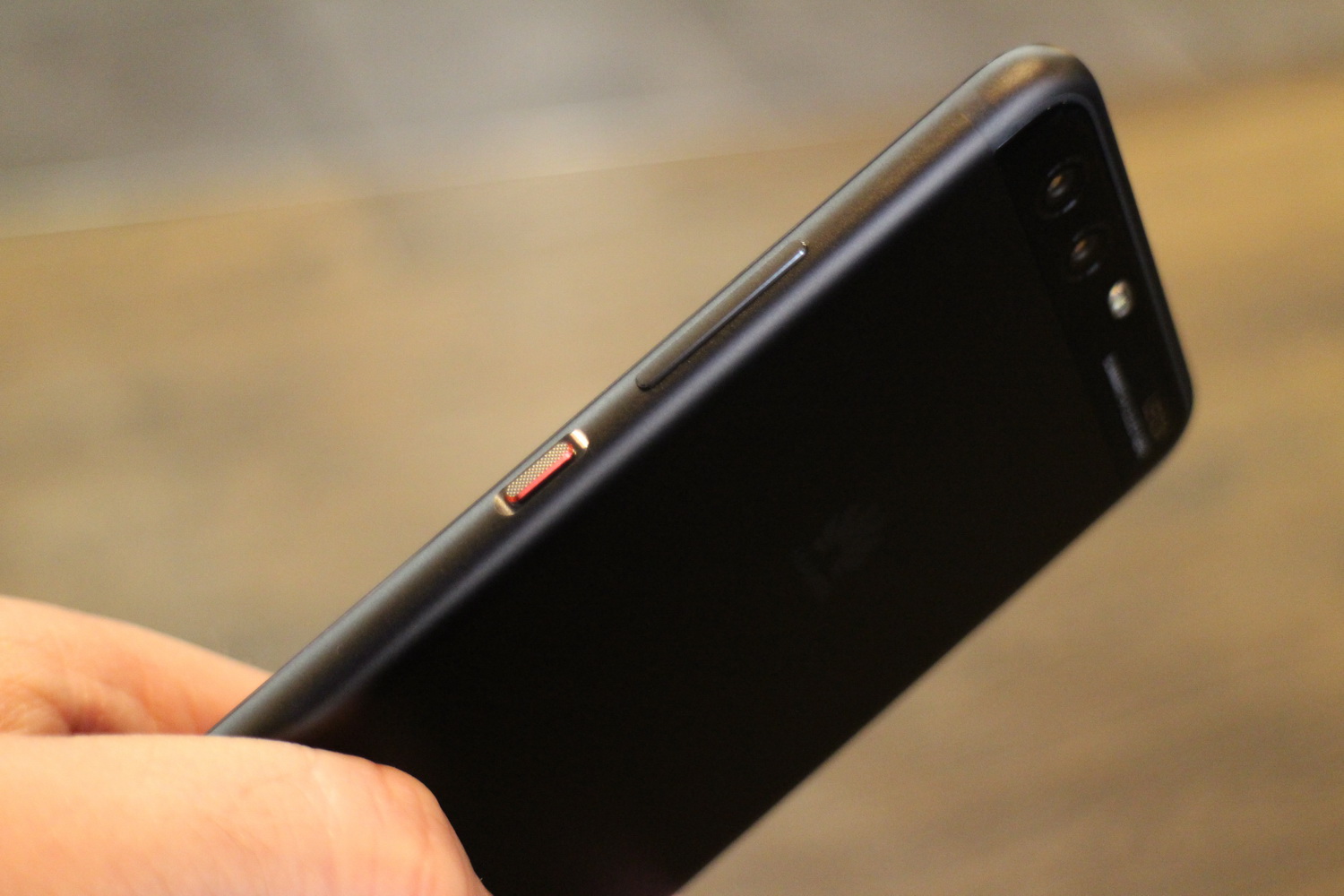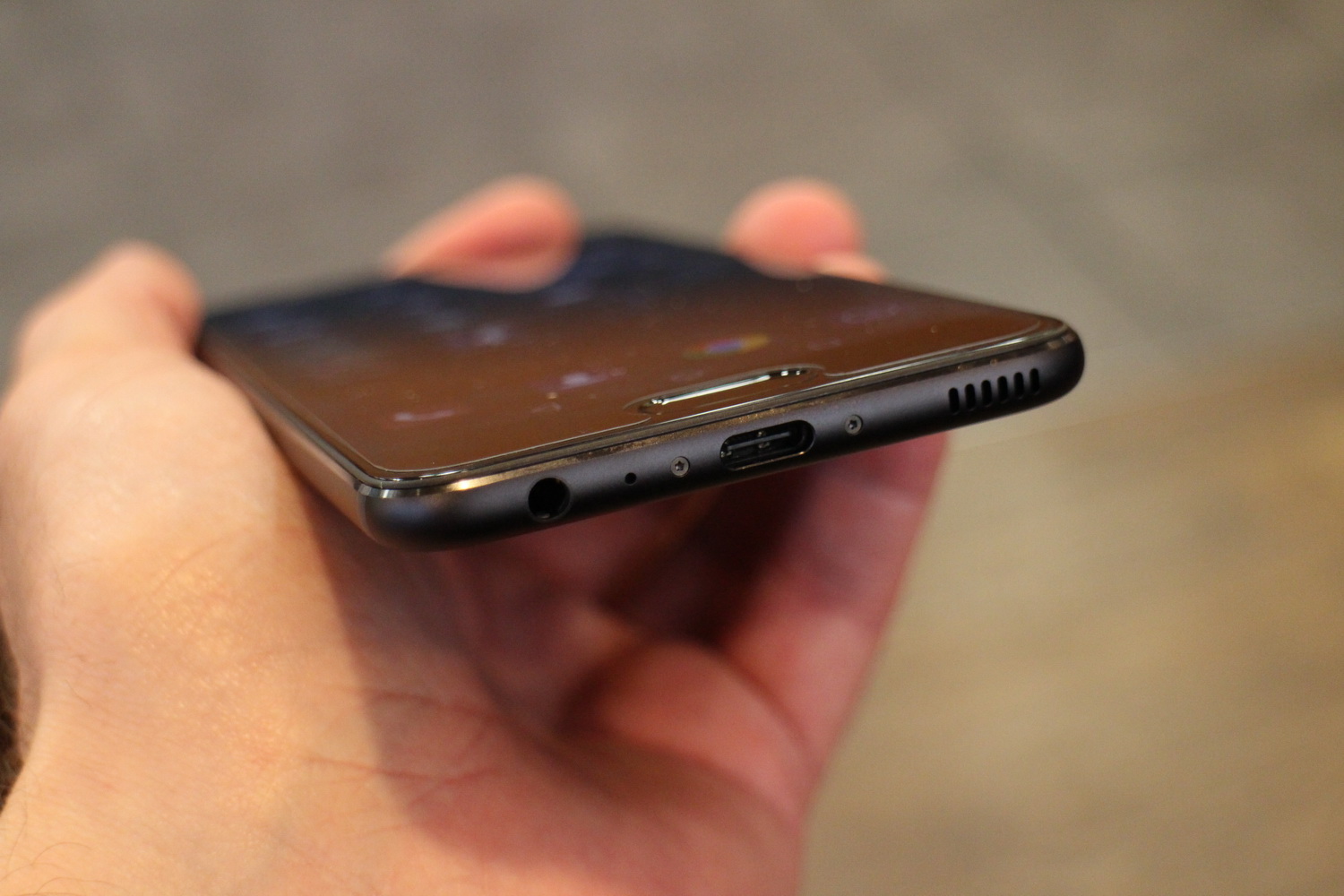
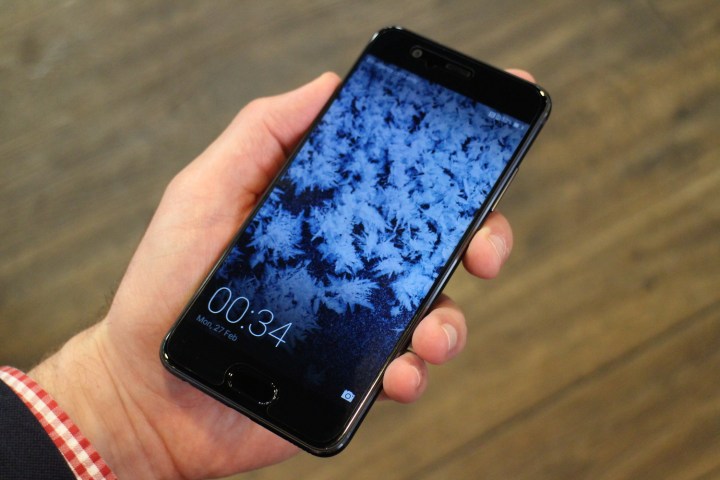
Specs
Huawei P10
|
Huawei P9 |
|
| Size | 145.3 x 69.3 x 7 millimeters (5.72 x 2.73 x 0.28 inches) | 145 x 70.9 x 7 millimeters (5.71 x 2.79 x 0.28 inches) |
| Weight | 5.11 ounces (145 grams) | 5 ounces (144 grams) |
| Screen | 5.1-inch IPS-NEO LCD capacitive touchscreen | 5.2-inch IPS-NEO LCD capacitive touchscreen |
| Resolution | 1,080 x 1,920 pixels (432 ppi) | 1,080 x 1,920 pixels (423 ppi) |
| OS | Android 7.0 Nougat (EMUI 5.1) | Android 6.0 Marshmallow (EMUI 4.1), upgradable to 7.0 |
| Storage | 64GB | 32/64GB |
| MicroSD card slot | Yes | Yes |
| NFC support | Yes | Yes, EVA-L09 only |
| Processor | Kirin 960 2.4 GHz Octa-core | Kirin 955 2.5GHz Octa-core |
| RAM | 4GB | 3/4GB |
| Connectivity | LTE, GSM, HSPA, 802.11a/b/g/n/ac Wi-Fi, GALILEO GPS | LTE, GSM, HSPA, a/b/g/n/ac Wi-Fi |
| Camera | 20-megapixel monochrome + 12-megapixel color rear cameras with OIS, 8-megapixel front | Dual 12-megapixel rear, 8-megapixel front |
| Video | 2160p@30fps, 1080p@60fps | 1080p@60fps, 1080p@30fps, 720p@120fps |
| Bluetooth | Yes, version 4.2 | Yes, version 4.2 |
| Fingerprint sensor | Yes | Yes |
| Other sensors | Gyroscope, accelerometer, proximity, compass | Gyroscope, accelerometer, proximity, compass |
| Water resistant | No | No |
| Battery | 3,200mAh (TYP) | 3,000mAh |
| Ports | USB-C, headphone | USB-C, headphone |
| Marketplace | Google Play Store | Google Play Store |
| Color offerings | Ceramic White, Dazzling Blue, Dazzling Gold, Prestige Gold, Graphite Black, Mystic Silver, Rose Gold, Greenery | Ceramic White, Haze Gold, Rose Gold, Titanium Grey, Mystic Silver, Prestige Gold, Red, Blue |
| Availability | None in USA | Amazon |
| Price | €650 | $429 |
| DT review | Hands-on | 4 out of 5 stars |
Power and productivity
Assuming there aren’t any unforeseen problems with the P10, it promises to be more powerful than the P9 in nearly every way. The P10 is equipped with a Huawei Kirin 960 processor, which is simply a newer iteration of the Kirin 955 chip that runs the P9. This translates to quicker performance overall, allowing apps to load quicker, games to perform better, and video to play without pause. Both phones are also available with 64GB of onboard storage — and both can be upgraded via an SD card — though there’s a cheaper model of the P9 that comes with 32GB.
Each phone runs on 4GB of RAM — the cheaper models of the P9 have 3GB — and in terms of connectivity, there’s very little separating the two. In fact, the only notable difference here is the P10’s inclusion of the superior GALILEO GPS system, which provides a higher degree of location accuracy than the traditional GPS systems installed in the P9.
Winner: Huawei P10
Design and display
In comparison to most smartphone lineup, the P-series is practically bursting with personality. Each phone is available in a bevy of cool colors, so you won’t get stuck with drab blacks and grays that might otherwise cramp your style. The unique “hyper diamond cut” technique used on the body of the P10 also gives it a reflective sheen (especially in the dazzling blue color) and promises to reduce fingerprint visibility. Don’t sleep on the P9, though. The P9 is a handsome phone in its own right, even if it’s not quite as vibrant.
Both phones are nearly the exact same size, though the P9 is a bit lighter than its younger sibling. Their screens are basically identical, boasting the same 1,080 x 1,920-pixel resolution, and they’re both wrapped in Cornish Gorilla Glass 3 for maximum protection. While the P9’s fingerprint sensor was located on its rear, Huawei decided to relocate the feature on the P10, bringing the gesture-sensitive sensor to the front of the phone, directly below the screen.
While the P9’s touch sensor allowed users to access the notifications menu and perform other actions related to the camera, the front-mounted sensor on the P10 supports several different gestures, replacing the traditional “Home,” “Back,” and “Multi-task” buttons. It’s a cool idea, but we’re not sure if the change will make for any practical use. Really, Huawei didn’t introduce anything groundbreaking in terms of design. The P9 was a well-designed phone to begin with, and we expect the P10 to be more of the same.
Winner: Tie
Software, Camera, and Pricing
Software
From the outside, it doesn’t look like Huawei changed much with the P10. Taking a deeper look, though, they’re not as similar as they might seem. While the P9 runs natively on Android 6.0 Marshmallow and uses Huawei’s custom EMUI 4.1, the P10 easily outstrips it. On top of Android OS 7.0 Nougat, EMUI 5.1 — the skin that introduced machine learning capability to Huawei’s phones — makes the user interface and experience much simpler and more enjoyable. Both configurations are based upon Huawei’s Emotion UI, which is similar to the iPhone.
With the P10, apps are quicker to open and close, and the interface is set up in such a way that nearly all functions can be accessed in less than three taps. The new EMUI’s “learning” ability automatically manages resources based on recently-used apps, thus ensuring that your phone performs best while you’re using your favorite apps and functions.
Winner: Huawei P10
Camera
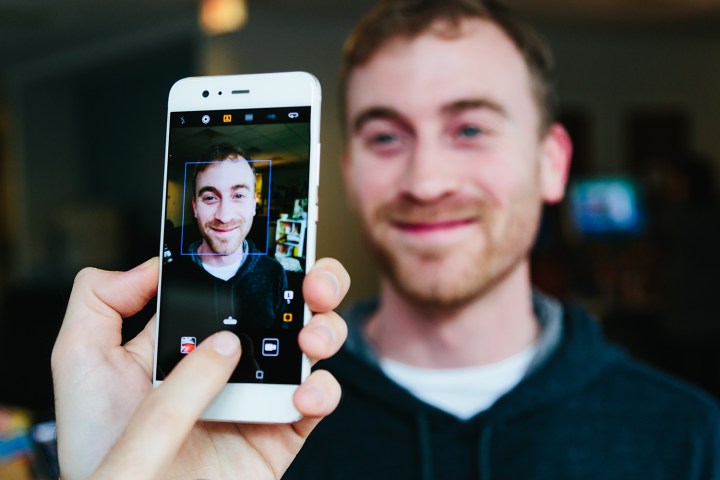
Last year’s P9 was well-received, namely because of its photo-taking and video-recording capabilities. Dual 12-megapixel Leica cameras with F/2.2 apertures adorn the phone’s rear, along with a back-illuminated CMOS sensor. The front camera isn’t too shabby either, clocking in at a more-than-respectable 8 megapixels. At the time of the P9’s release, few smartphones boasted cameras this sharp.
Nearly a year later, however, Huawei has improved upon its winning formula. The P10 is an absolute powerhouse when it comes to photography, featuring dual Leica cameras — this time, one 20-megapixel monochrome sensor and one 12-megapixel color sensor — in the rear, and an 8-megapixel selfie camera. Also, while the P9’s camera and camera software focused largely on landscapes, the P10 boasts unique, 190-point facial mapping to improve visibility and clarity in all types of lighting.
In addition, Huawei took the popular bokeh mode and added it to both rear lenses, and the front camera (also a Leica collaboration) has improved brightness and a wider dynamic range. The P10 is simply a superior shooter.
Winner: Huawei P10
Pricing and availability

So far, Huawei hasn’t announced any plans to bring the P10 to America, though it’s not out of the question. At CES 2017, the Mate 9 was released domestically, several months after its international release. The P9 can now be purchased anywhere — though, some colors are restricted — and costs an upwards of $400.
The P10 is currently available from UK retailer Carphone Warehouse for 570 pounds, which translates to roughly $730. However, there is no indication the phone will ever be sold in the states. The P9 is more widely available, and slides in at a considerably cheaper price, so it gets the win here.
Winner: $429
Overall winner: Huawei P10
Despite the fact that you can’t currently purchase the Huawei P10 in the United States, it’s still clearly a superior phone. Generally speaking, when it comes to flagship phone lines, a higher number means a better phone, and the P-series is no exception.
Camera fiends — especially Leica enthusiasts — will love both phones, but the P10 is simply more powerful and features a better, more efficient UI. If at some point, you have the opportunity (and the funds) to acquire either the P9 or P10, your decision should be an easy one.
Article originally published on 03-26-2017 by Nick Hastings. Updated on 04-25-2017 by Adam Ismail: Updated P10 pricing and availability.



